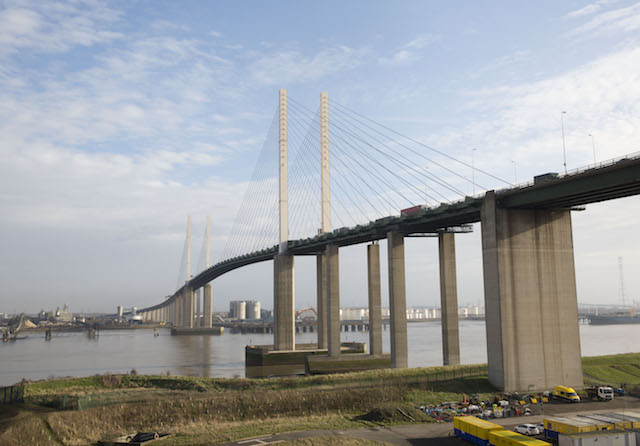The government has given plans to build a new crossing beneath the River Thames the green light. Highways England’s chief executive Jim O’Sullivan said the proposed Lower Thames Crossing, east of Gravesend and Tilbury, would improve journey times and “dramatically” increase capacity for traffic crossing the river east of London – and is expected to carry 4.5 million heavy goods vehicles in its first year.
Highways England will be responsible for delivering the crossing, which will see a new tunnel constructed to ease pressure on the existing Dartford Crossing – currently the only road crossing of the River Thames east of London.
The new crossing will be linked to the road network by a new road north of the river, which will join the M25 between junctions 29 and 30, and a new road south of the river which, will join the A2 east of Gravesend.
“This route will greatly improve journeys as well as unlock more than £8 billion of economic benefits and create some 6000 jobs,” O’Sullivan said, adding the plans were underpinned by years of studies and assessments, plus consideration of the responses of more than 47,000 people obtained in a consultation held in 2016.
The scheme will cost £4.4 billion and the new 13-mile route will have a 70 mph for cars. Capacity for vehicles crossing the Thames east of London will increase by 70 per cent.
Around 55 million journeys are made each year on the Dartford Crossing, six million more than it was designed for, and it suffers from closures due to incidents almost daily. This announcement provides a huge boost for local businesses, of which many agree that the new crossing will help their business to grow and employ more people.
The Freight Transport Association (FTA) welcomed the announcement, but urged the government to proceed with its construction as quickly as possible in the context of a broader roads policy which must keep transport moving nationwide for many years to come.
“The decision to proceed with the third crossing over the Thames is long overdue,” said Natalie Chapman, FTA’s head of policy for London and the South East. “Congestion at the Dartford Crossing is predicted to reach pre-Dart Charge levels by 2020, while the Blackwall Tunnel has become a cause of impossible delays.
“The M2/M25 route is a vital cog in the country’s freight machine and it must continue to work as smoothly as possible, as we move towards leaving the European Union, to ensure British companies can trade without delays both domestically and internationally.”
The Road Haulage Association (RHA) said the new crossing was good news for hauliers. “The new crossing will have a tremendously positive economic benefit,” said RHA chief executive, Richard Burnett. “The route will reduce journey times, especially for trucks heading towards or away from the all-important Channel ports. The congestion on the Dartford Crossing will also be reduced and the potential savings for operators in terms of time, money and fuel will be considerable.”
However, he added the RHA’s main concern was the anticipated completion date will be 10 years from now. “If traffic levels continue to increase at their current levels, the new crossing may be obsolete before it even opens,” he warned.






